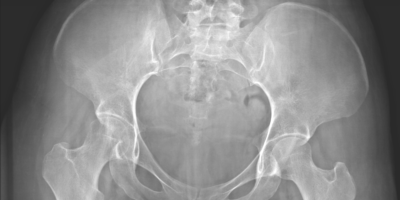The Intermittent Fasting Diet (IF Diet) has gained significant attention in recent years as a revolutionary approach to weight loss and improved health. Unlike traditional diets that focus solely on what you eat, the IF Diet emphasizes when you eat, offering flexible eating windows that can fit into any lifestyle. With various methods available, such as the 16/8 and 5:2 protocols, individuals can choose a plan that best suits their needs. Embracing this eating pattern not only promotes weight loss but also offers numerous benefits, including enhanced metabolic health and improved insulin sensitivity. As more people explore the advantages of intermittent fasting, many are discovering how a well-structured intermittent fasting meal plan can lead to long-term success and a healthier lifestyle.
Also referred to as time-restricted eating or periodic fasting, the Intermittent Fasting Diet encourages individuals to cycle between periods of eating and fasting. This dietary approach has garnered interest for its potential health benefits, which extend beyond simple weight loss. People often delve into the various types of intermittent fasting, such as the popular 5:2 diet or the 16/8 method, each offering unique structures for calorie intake and fasting hours. Notably, the benefits of intermittent fasting stretch to improved metabolic function and even cellular repair processes, making it an appealing choice for those looking to enhance their overall well-being. As you consider trying an intermittent fasting diet, exploring a structured 3-day intermittent fasting menu may provide a practical starting point to experience its effects firsthand.
What is Intermittent Fasting Diet (IF Diet)?
Intermittent fasting (IF) is not just another dieting trend; it’s a structured approach to eating that alternates between periods of fasting and eating. This method has gained immense popularity due to its simplicity and effectiveness in promoting weight loss and improving overall health. The primary premise of the IF diet is not about the food you eat, but about when you eat it. By restricting the eating window, your body can enter a fasting state, which can lead to various metabolic benefits and weight loss.
The IF diet can be seen as a natural way of eating, similar to how our ancestors did before the advent of modern convenience foods. For example, skipping breakfast and eating lunch later in the day mirrors how people historically only ate when food was available. This approach can help regulate insulin levels and enhance fat burning, making it an appealing option for many looking to shed excess weight.
Frequently Asked Questions
What is the Intermittent Fasting Diet (IF Diet)?
The Intermittent Fasting Diet, commonly known as the IF Diet, is an eating pattern that alternates between periods of eating and fasting. Unlike traditional diets that focus on what you eat, the IF Diet emphasizes when you eat. This method can involve various approaches, such as the 16/8 method, where you fast for 16 hours and eat during an 8-hour window.
What are the types of Intermittent Fasting? Are there specific fasting hours?
There are several types of Intermittent Fasting, including the 16/8 method, where eating is restricted to an 8-hour window each day, and the 5:2 method, which allows normal eating for five days and limits calorie intake to 500-600 calories on two non-consecutive days. Specific fasting hours depend on the method you choose and can be tailored to fit your lifestyle.
How is the Intermittent Fasting Diet implemented?
Implementing the Intermittent Fasting Diet involves selecting a method that suits your lifestyle, such as the 16/8 method or the 5:2 method. During fasting periods, you abstain from calorie consumption, but you can drink water, tea, or black coffee. It’s essential to maintain a balanced diet during eating windows to maximize health benefits.
What are the benefits of Intermittent Fasting?
The benefits of Intermittent Fasting include weight loss, improved metabolic health, enhanced insulin sensitivity, and reduced risk of chronic diseases like heart disease and type 2 diabetes. Additionally, intermittent fasting may promote cellular repair processes and improve brain health, making it a popular choice for those seeking overall health improvements.
What are the dangers of Intermittent Fasting?
While the Intermittent Fasting Diet can be beneficial, it may not be suitable for everyone. Potential dangers include fatigue, headaches, and decreased work performance during the initial adjustment phase. Individuals with certain medical conditions, such as diabetes or eating disorders, should consult a healthcare professional before starting intermittent fasting.
Who should not follow the Intermittent Fasting (IF) Diet?
People who should avoid the Intermittent Fasting Diet include those with diabetes (unless supervised), individuals with low blood pressure, pregnant or breastfeeding women, and those with a history of eating disorders. Consulting with a healthcare provider is crucial to ensure safety and suitability.
What does a 3-day Intermittent Fasting meal plan look like?
A sample 3-day Intermittent Fasting meal plan includes: Day 1 – Breakfast: 2 boiled eggs, cheese, and cucumber; Dinner: grilled fish and salad. Day 2 – Breakfast: cocoa oatmeal; Dinner: vegetable dish with whole grain bread. Day 3 – Breakfast: omelet with cottage cheese; Dinner: grilled chicken with bulgur and salad.
How much weight can be lost in one month with Intermittent Fasting?
With the Intermittent Fasting Diet, an individual can typically lose around 4-5 kg in one month, although this can vary based on factors such as age, gender, and adherence to the diet.
When should you exercise during Intermittent Fasting?
You can exercise during the fasting period if your energy levels allow it. However, some prefer to work out after eating to maintain performance. Listen to your body and choose a time that feels best for you.
How long should Intermittent Fasting be practiced?
The duration of the Intermittent Fasting Diet can vary based on individual goals. It can be used short-term for weight loss or as a long-term lifestyle change, but it’s important to choose a method that fits your personal health and lifestyle.
What is forbidden during Intermittent Fasting?
During fasting periods, any food or drink containing calories is typically forbidden. This includes sugary drinks, snacks, and meals. Only non-caloric beverages like water, black coffee, and herbal teas are allowed.
How many hours should you fast to burn fat?
Fat burning typically begins after 12 hours of fasting, with increased fat oxidation occurring between 16-24 hours of fasting. This makes longer fasting periods more effective for fat loss.
Is water consumed in the Intermittent Fasting Diet?
Yes, water consumption is encouraged during both fasting and eating periods of the Intermittent Fasting Diet. Staying hydrated can help control hunger and support overall health.
Can you drink milk coffee on an Intermittent Fasting Diet?
Drinking milk coffee is not permitted during fasting periods because it contains calories. However, you can enjoy milk coffee during your eating window.
| Key Points | Description |
|---|---|
| What is Intermittent Fasting? | A nutritional strategy focusing on when to eat rather than what to eat, involving periods of eating and fasting. |
| Types of Intermittent Fasting | Includes 24-hour fasts, 5:2 diet, and time-restricted feeding (e.g., 16/8 method). |
| Benefits | Can lead to weight loss, improved metabolic health, and protection against diseases. |
| Dangers | Potential fatigue, headaches, and decreased performance initially; may slow metabolism if done incorrectly. |
| Who Should Avoid? | People with diabetes, low blood pressure, eating disorders, pregnant or breastfeeding women. |
| 3-Day Sample Menu | Includes eggs, fish, chicken, vegetables, and healthy grains; tailored for average weight. |
| FAQs | Covers weight loss potential, exercise timing, fasting duration, and allowed drinks during fasting. |
Summary
The Intermittent Fasting Diet is a popular approach to weight loss that focuses on the timing of food intake rather than the specific foods consumed. It has gained traction due to its simplicity and effectiveness in promoting metabolic health, weight loss, and reducing the risk of chronic diseases. With various methods such as the 5:2 diet and the 16/8 method, individuals can choose what fits their lifestyle best. While many have found success with this diet, it’s crucial to be aware of potential risks and consult with a healthcare professional, especially for those with pre-existing conditions. Overall, the Intermittent Fasting Diet offers a flexible and beneficial framework for those seeking healthier eating habits.
















Comments